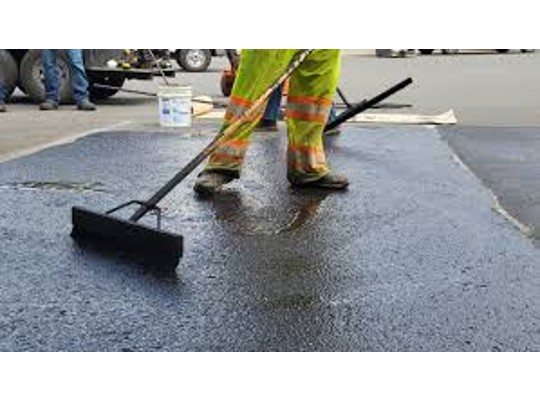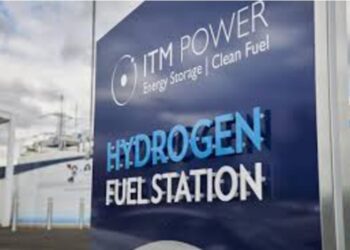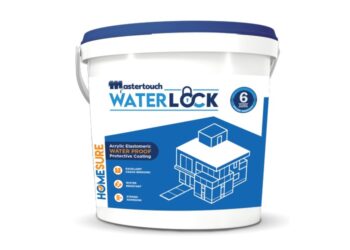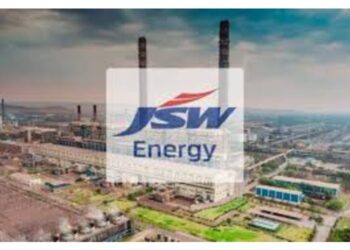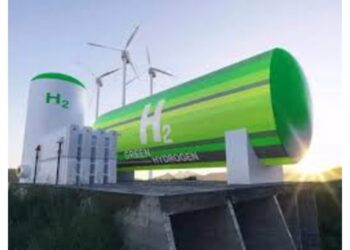AracichLONG ISLAND, NY, UNITED STATES – Modern Hydrogen demonstrated a pioneering carbon-sequestration technology during a live event at National Grid’s facility in Bellmore, Long Island this week using Modern Asphalt. This demonstration represents an effort to decarbonize infrastructure, with the potential to make an impact on reducing global carbon emissions.
The event featured the integration of Modern Carbon – captured by Modern Hydrogen from renewable natural gas (RNG) – into hot-mix asphalt. By replacing a portion of the oily bitumen used in asphalt, this technology provides a scalable solution for reducing the carbon footprint of road construction, aligning with New York State’s ambitious climate goals.
“As the demand for low-CO2 paving materials continues to grow, municipalities and asphalt producers have two key levers to reduce emissions: first, by targeting the emissions generated during asphalt production, and second, by using input materials that inherently have a lower carbon footprint,” said Tony Tata, Senior Advisor for Infrastructure and Energy Security at Modern Hydrogen and former Secretary of Transportation of North Carolina. “Today’s demonstration represents an answer for both of those CO2 reduction opportunities, and it’s a major milestone for the industry.”
“At National Grid, we’re always exploring innovative technologies that can support our mission to reduce emissions and deliver a fair and affordable energy future,” said Pradeep Tagare, Head of Investments at National Grid Partners, the utility’s venture investment and innovation arm. “It’s not enough just to reduce carbon emissions – if captured carbon can be used in a sustainable way, that’s also a win for the environment.” Tagare’s group invests in startups whose technology has potential to help National Grid’s business units accelerate the energy transition.
Potential Impact on New York State – and Beyond
Modern Hydrogen’s innovative technology addresses one of the key challenges in reducing carbon emissions: preventing the creation and release of carbon dioxide, a major greenhouse gas, from burning natural gas. The process involves splitting the carbon and hydrogen atoms in methane, which is the primary component of natural gas.
This separation results in two valuable products: clean-burning hydrogen, which emits only water vapor when used as fuel, and a powdered form of carbon. This solid Modern Carbon is then integrated into asphalt for road construction, effectively locking the carbon away from the atmosphere. For every ton of solid Modern Carbon sequestered in asphalt, the equivalent of approximately 3.67 tons of CO2 emissions is prevented from entering the atmosphere.
“Our methane pyrolysis technology is designed to be both efficient and scalable, making it an ideal solution for distributed, dependable clean hydrogen generation,” said Mothusi Pahl, Vice President of Business Development at Modern Hydrogen. “This demonstration illustrates how the carbon removed by that clean energy process can be implemented in this other important sector to reduce emissions nationwide.”
By integrating Modern Carbon into asphalt mix, this technology has the potential to not only permanently sequester carbon in roads but also drastically reduce the carbon footprint of infrastructure projects and strengthen our streets.
New York State produces approximately 18.5 million tons of asphalt each year, making road construction a significant contributor to the state’s carbon emissions. In addition, the binders currently used in asphalt mixtures are derived from crude oil, and their extraction is responsible for more than half the greenhouse gas emissions from asphalt production. If widely adopted, this approach could sequester thousands of tons of carbon annually, substantially contributing to New York’s climate goals and setting a new standard for sustainable infrastructure.
Key Demonstration Details
While Modern Asphalt has been tested in sweltering Bexar County, Texas and in the rain-drenched Pacific Northwest, this week’s hot mix asphalt demonstration was the first time it had been deployed in an area known for frigid winters.
The demonstration on Monday, Sept. 30, involved paving a 4×4-foot patch with hot-mix asphalt containing 10 pounds of Modern Carbon. This solid carbon, captured from Renewable Natural Gas (RNG), was seamlessly integrated into asphalt materials. RNG contains carbon captured from the air, and by sequestering that carbon into asphalt, the carbon is permanently removed from the atmosphere.
The event was led by representatives from National Grid, Modern Hydrogen, and Rason Materials. Regional stakeholders and engineers came to witness the process and to learn about the broader impact of Modern Hydrogen’s technology.
“It’s essential for us to stay informed on the latest technologies that can enhance our operations,“ said Pat Guidice, Business Manager, IBEW Local 1049. “We remain focused on ensuring that any future technologies we support meet the high standards our members uphold every day.”
“Our Building Trades Council believes strongly in the future of the hydrogen industry here on Long Island,” said Matthew Aracich, President of the Building and Construction Trades Council of Nassau and Suffolk Counties. “Our Council commends this National Grid initiative which represents just the first step towards unlocking the full potential of hydrogen. As we progress into the future, with good industry partners like National Grid, the sky is the limit for hydrogen applications and technology.”
Future Implications
The success of this demonstration paves the way for broader implementation of carbon-sequestered asphalt in infrastructure projects across the Northeast and beyond. After successful tests, Modern Hydrogen will explore opportunities to scale this technology, positioning it as a key component in the effort to reduce carbon emissions from construction activities.
Modern Hydrogen has multiple successful hydrogen generation pilots in the field, and the first utility-scale commercial clean hydrogen generation unit will be active in 2025.


